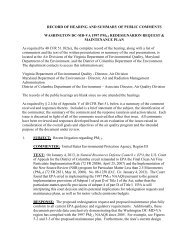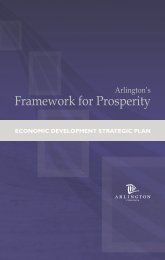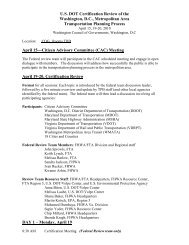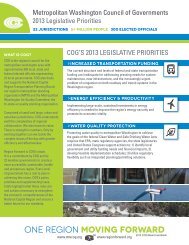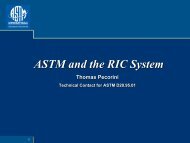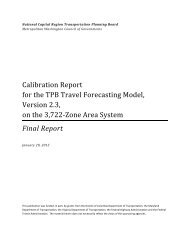PTI Local Government Energy Assurance Guidelines - Metropolitan ...
PTI Local Government Energy Assurance Guidelines - Metropolitan ...
PTI Local Government Energy Assurance Guidelines - Metropolitan ...
Create successful ePaper yourself
Turn your PDF publications into a flip-book with our unique Google optimized e-Paper software.
State <strong>Government</strong><br />
■ ■ Emergency Management Agency (EMA): The primary emergency response agency in most States is the<br />
State emergency management agency or similar authority. The State emergency management agency has<br />
important access to State emergency response resources, and it serves as a key link to Federal resources,<br />
making it a critical partner in energy assurance efforts.<br />
■ ■ State <strong>Energy</strong> Office (SEO): Most State energy offices (SEOs) are involved in energy assurance efforts<br />
(particularly regarding petroleum supply issues), and are also leaders on the energy efficiency and energy<br />
emergency fronts. In addition, Federal funding for State energy assurance education has gone to the<br />
Washington, DC-based NASEO, the trade association for SEOs. NASEO and its members have significant<br />
information and resources that can contribute to local EAPs.<br />
■ ■ State Homeland Security Office (SHSO): In some States, the agency with the primary responsibility and<br />
authority for directing statewide activities pertaining to the prevention of, and protection from, terrorist<br />
related events is the SHSO as opposed to the EMA. Responsibilities can range from the development and<br />
implementation of a comprehensive and coordinated strategy to secure the state from terrorist threats and<br />
attacks to serving as a liaison between Federal, State and local agencies, and the private sector on matters<br />
relating to the security of the State and its citizens.<br />
■ ■ Public Utility Commission (PUC): PUCs are regulatory agencies which monitor regulated utilities and<br />
associated energy suppliers. States with non-regulated rural electric cooperatives and/or municipally-owned<br />
utilities may also develop reporting/monitoring requirements for such systems. Since most utilities fall under<br />
some regulation, either by the PUC or a county or municipal government that owns and operates a municipal<br />
utility, these organizations can be important partners in local EAPs.<br />
■ ■ Office of the Governor: Governors and governors’ offices have the ultimate responsibility for energy<br />
emergency planning. A State governor usually has the ability to declare an energy emergency. Most<br />
governors’ offices have excellent ties to major energy suppliers and the media. Therefore, the governor’s<br />
office can be a key partner.<br />
Federal <strong>Government</strong><br />
The following Federal government agencies are potential partners in the local EAP effort:<br />
■ ■ U.S. Department of <strong>Energy</strong> (DOE): As mentioned earlier in this document, the Office of Electricity Delivery<br />
and <strong>Energy</strong> Reliability (OE) and the <strong>Energy</strong> Information Administration (EIA) are the primary offices<br />
concerned with energy assurance within the U.S. Department of <strong>Energy</strong>. OE is the primary DOE office that<br />
deals with energy emergency planning and local government EAPs. EIA is the statistics arm of DOE. It has<br />
up-to-the-minute energy supply information available on its website and excellent State energy background<br />
information for local EAPs. OE also maintains the password-protected <strong>Energy</strong> Emergency <strong>Assurance</strong><br />
Coordinators (EEAC) website described in Section 3.7. OE will be a good resource during EAP development,<br />
and EIA may have useful information for this process as well. However, response-oriented partnerships will<br />
be found primarily at the regional or State level. The reason for this is that Federal resources are typically<br />
implemented at the State level.<br />
■ ■ U.S. Department of Homeland Security (DHS): The State may have developed its own homeland security<br />
agency since September 11, 2001. However, the Federal Emergency Management Agency (FEMA) is an<br />
agency within the U.S. DHS that supports State and local governments with emergency response and disaster<br />
relief. During an energy emergency, coordination will likely occur with FEMA through the State Emergency<br />
Operations Center.<br />
<strong>Local</strong> <strong>Government</strong> <strong>Energy</strong> <strong>Assurance</strong> <strong>Guidelines</strong> – Version 2.0 | 69



